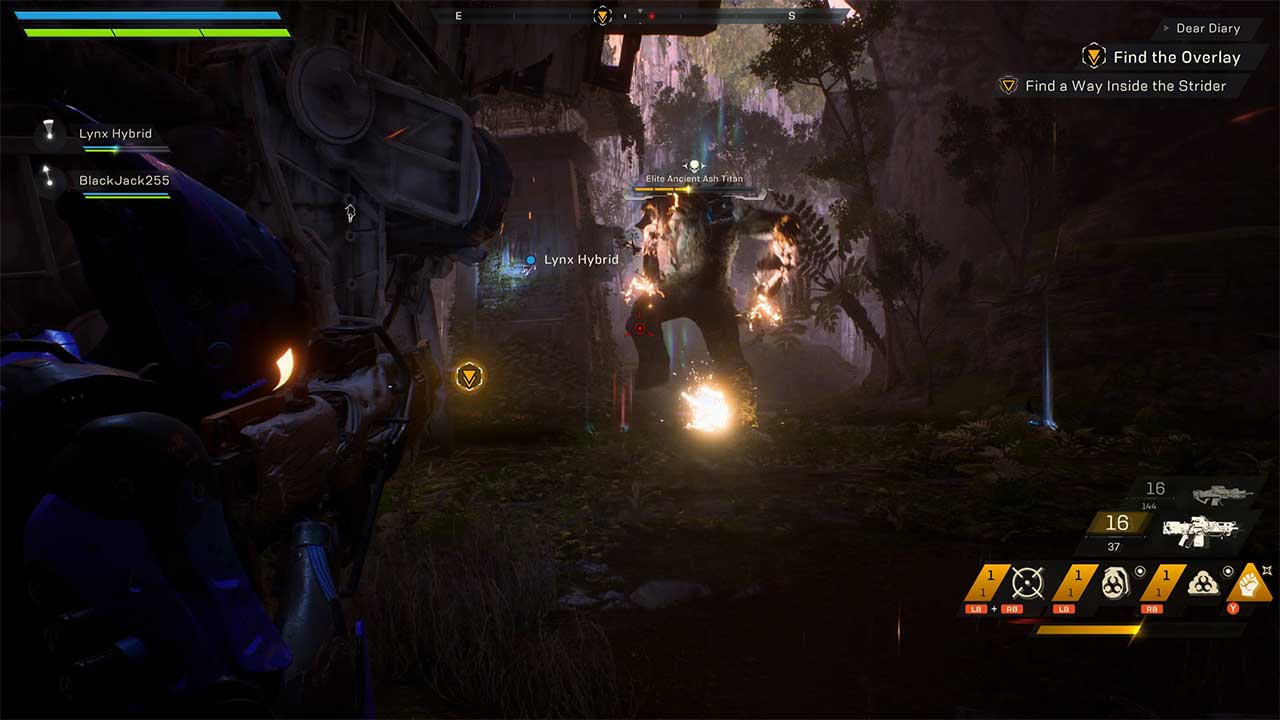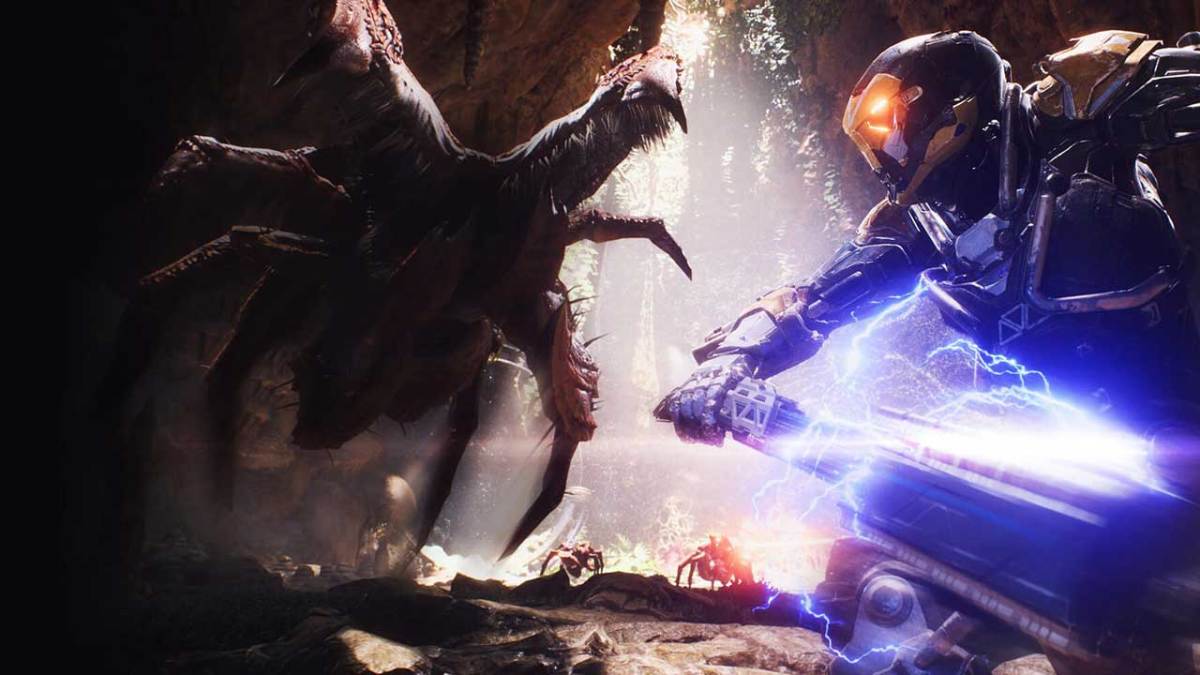When you think of Bioware you don’t necessarily think of third person shooters. What I associate with the studio are the role playing games that were released last generation — the beloved Mass Effect and Dragon Age games that built up such a rabid fanbase for them. The gaming industry has changed a lot since then though, with competitors like Ubisoft and Activision each planting their stake in the ground with “games as a service” games like Destiny and The Division — it was only a matter of time before EA wanted to try and take a piece of the pie. In theory, this should be a match made in heaven that offers the best of both worlds.
While Anthem’s goal is to deliver a narrative driven loot-based shooter, they fall into the same pitfall that all games of this type do. Anthem feels like it could be the start of something great, the start of something that’s going to need to be refined over time, and something that could use a few months of community feedback. Anthem is Electronic Arts’ answer to The Division and Destiny. It’s a third person shooter that has players controlling one of four class-based Javelin suits that can be upgraded and outfitted with different weapons and gear to make them more powerful. The hook is to get new loot and cosmetics for said Javelin suit, the loop is applying said loot to your suit to tackle greater and greater challenges, ultimately earning more loot.

Anthem gets a lot of things right. It’s a beautiful game on the Xbox One X. (We also played it on PC and it was equally impressive). Bioware has nailed the different feels that the four different Javelin suits provide. There’s a deadly fast ninja-like suit called the Interceptor. A javelin called Storm which can hurl elemental attacks at enemies while hovering from above. There’s the hulking Colossus. Finally, there’s the jack-of-all-trades Ranger. Each one feels uniquely different than the other and can be mixed and matched by a squad of players for a variety of party compositions that allow for different types of attack combinations.
Bioware is certainly best known for their single-player role-playing games, but Anthem is the opposite of this type of solitary experience. All of the different activities that you can do in the game, whether that be faction side missions, main path story missions, raid-like stronghold missions, or others, are done through online matchmaking. This means that you can either bring a party into these missions to play with friends, or you’re going to be teamed up with random players on the platform you play on. Except for only a handful of activities, Anthem will force you to play with others. It’s oddly disjointed in this regard though, especially in the first of two Acts for the game as you’ll constantly be moving back and forth between third person multiplayer missions and a first person walking tour of the Fort Tarsis story hub.

While you’re out on missions in Anthem, it’s third person shooting action with some light puzzle solving and exploration. One of the unique features of Anthem is in the way that you traverse the world. Flight is one of your primary movement mechanics and one of the coolest things in the game, but your thruster ability can overheat so you’ll need to use it in tandem with running and double jumping to get where you want to go. Missions themselves in Anthem do leave a lot to be desired. There’s a general lack of enemy types in the game and there’s also a lack of diversity in the mission structures. When you couple this a lack of distinctive qualities for loot, your tenth hour in Anthem can feel very much like your first.
What is quite good are the javelin suits themselves and the unique abilities for each suit. Bioware absolutely nails this aspect of the game and it’s one of the redeeming qualities that can make Anthem fun to play with friends. Each javelin has unique abilities and weapons that can be used in battle and players can team up to use a combo system to inflict massive damage on enemies. While this combo system doesn’t necessarily come into play in the game’s 10-hour campaign, it does once the difficulty starts ramping up in the endgame.
Anthem wants you to do two things. The first is to experience the story of the game. This is approximately 10-hours worth of content that certainly leaves a lot to be desired when it comes to world building and character development. Anthem feels rushed to explain a lot in a short amount of time and ultimately relies on interaction with non-playable characters in the game’s Fort Tarsis hub area and collectible codex entries to try and fill in the blanks. The hope is obviously to have the player enjoy this introduction enough to keep playing once the credits roll because that’s where Anthem’s replay value is. Once you “complete” Anthem you’ll head into end game content that is supposed to offer greater challenges that are there to keep players engaged with new tiers of loot for further character customization.

The frame of Anthem is essentially like either of the aforementioned loot shooters in Destiny or The Division. If you’ve played either of those games you kind of know what to expect in Anthem. It’s all about the loot. Unfortunately, the way that Anthem deals out loot to players can make the game feel somewhat boring. There’s a lack of anything feeling special or powerful along the course of the story or in the endgame content. While the loot is color-coded that’s about as far as the distinguishing features go. The thing that absolutely needs to be nailed in a loot-driven game is the loot. While games like Destiny relied on RNG (almost too much at certain points to dole out powerful and rare weapons to players) Anthem feels more like a color-coded progression system than anything with any randomness or luck associated with it.
Anthem also runs into the same problems that those games did when they launched. As something that should evolve over time, Anthem in a couple months will likely be a better game. As new content rolls out with new missions or story and narrative elements, it very well may feel like a more rich universe than it feels at this time. Right now, Anthem feels like a game that has potential to be better than it currently is. Whether or not it will actually get to that point is anyone’s guess. Bioware’s safe bet will certainly impress in the visual department and the gameplay is enjoyable enough as well, but the ability to keep players engaged is going to come down to more content and refining the current systems in place.
The Verdict
Anthem impresses on the presentation front and the javelin suits are a blast to play with, but a lack of diversity in the game and uninspired loot-driven progression system make it feel like Anthem could be a much better game than it currently is with a few updates.











Published: Feb 26, 2019 10:53 pm